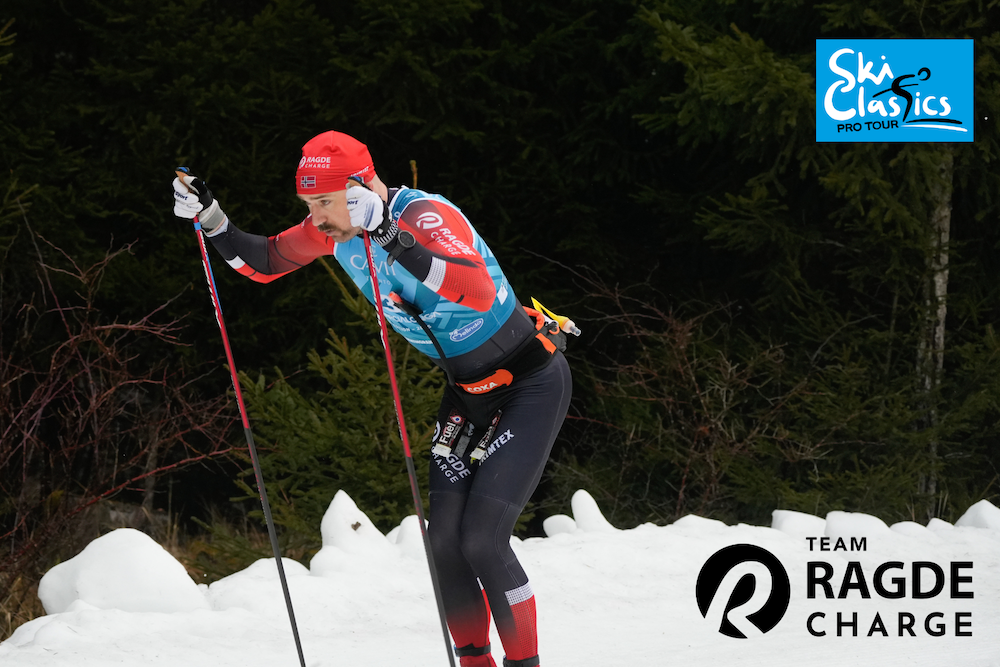By Teemu Virtanen
In yesterday's article about the importance of summer training, we defined that skiers are made in the summer and the primary focus is on building up the foundation and endurance. That means that we need to spend a lot of hours on roller-ski, running, cycling or any other possible training method to raise the endurance level. But long and low intensity workouts are not enough as we need to ensure that there is enough intensity and strength training in our summer programs.
Let's find out what kind of workouts some of our Pro Team athletes tend to do in the heat of the summer. Oskar Kardin, Team Ragde Eiendom, comes up with good and simple examples for endurance and interval training; 4-6 hour long double-poling sessions with low intensity when building up the former and 6 x 10-minute uphill intervals at threshold or 3 x 20 minutes double-poling with sprints in each interval for the latter.
Petter Eliassen's, Team Ragde Eiendom, examples are quite similar in nature, but unlike Oskar, he includes strength training in his summer program.
"A typical low intensity workout is 60-80 km on roller-skis, maybe including some short sprints. A typical interval session can be 4x15min double-poling or 6×6 running with poles. Strength workouts can consist of two different types of training; maximal strength with 3×5 repetitions using 2-4 exercises like push-ups, pull-ups, dips and so on, and then 10-20 min core strength."
Jorgen Aukland, the manager of Team Ragde Eiendom and a former Pro Team athlete with Vasaloppet and Marcialonga victories under his belt, puts more emphasis on intensity than Oskar and Petter.
"One good example of a typical summer training session is three hours of easy roller-skiing. However, if you ask other people about <
"An interval session can be like this: 20 min warm up, 6×8 min double-poling in flat and rolling terrain. One-minute recovery between the intervals. We keep the intensity at the anaerobic threshold and above. The purpose for these intervals is to work with race speed and to keep the engine running. Strength training can be 20 min core and then 40 min in the weight room. This is needed to get the punch and speed in the sprints and on uphills."
Many of us have heard about the tempo and speed that the "Aukland Method" calls for, and it is an effective of maintaining and improving the capacity to keep up a high race pace. However, one needs to be in great overall shape and have a lot of training years behind him or her before turning up the speed a notch. Even then, one must be careful of pushing too hard as the recovery time and balanced workouts become even more important - when you go fast, you also have to go slow sometimes!
Then, what is the ultimate purpose and goal of a skier's summer training? What does he or she need to get out of it? And what are the usual traps that a skier should try to avoid. Let's find out!
"Build a good base without overkilling anything, be careful in September and October," Jorgen advices profoundly. "A lot of skiers are in good shape and almost unbeatable in the off-season, but when the winter season starts, they are tired. Another important thing is to work with your mind. Normally, the best skiers can be beaten during the summer and fall, but they turn on a switch in their head when the season starts and suddenly they find their race pace and win ski races."
Oskar mentions the same things as Jorgen and also warns about being too good in the summer.
"You need to build a good ground to stand on when you step into the fall with more intervals and higher intensity. I think the worst trap is to chase the best shape during the summer. I think you need to train a lot and be really tired after some workouts, but you cannot peak too early."
Petter also urges us to focus on well-planned summer training sessions with a lot of low intensity workouts but also with some quality ones with strength and sprint training. He offers a great tip for all of us to be aware of:
"One typical trap can be to focus too much on roller-ski competitions and then use too much mental energy in trying to peak in these races, and therefore lose valuable training base for the winter."
Based on the comments from these fine athletes, we can conclude that a well-balanced training program is needed for the summer, and you need to "hold your horses" so your physical peak won't come too early. Tomorrow we will give the stage to one of the “Pro Team Director of the Year” nominees, Gustaf Korsgren from Team Ramudden and the Climb king of the season, Morten Eide Pedersen, Team Kaffebryggeriet, and let them shed some light on proper summer training.


